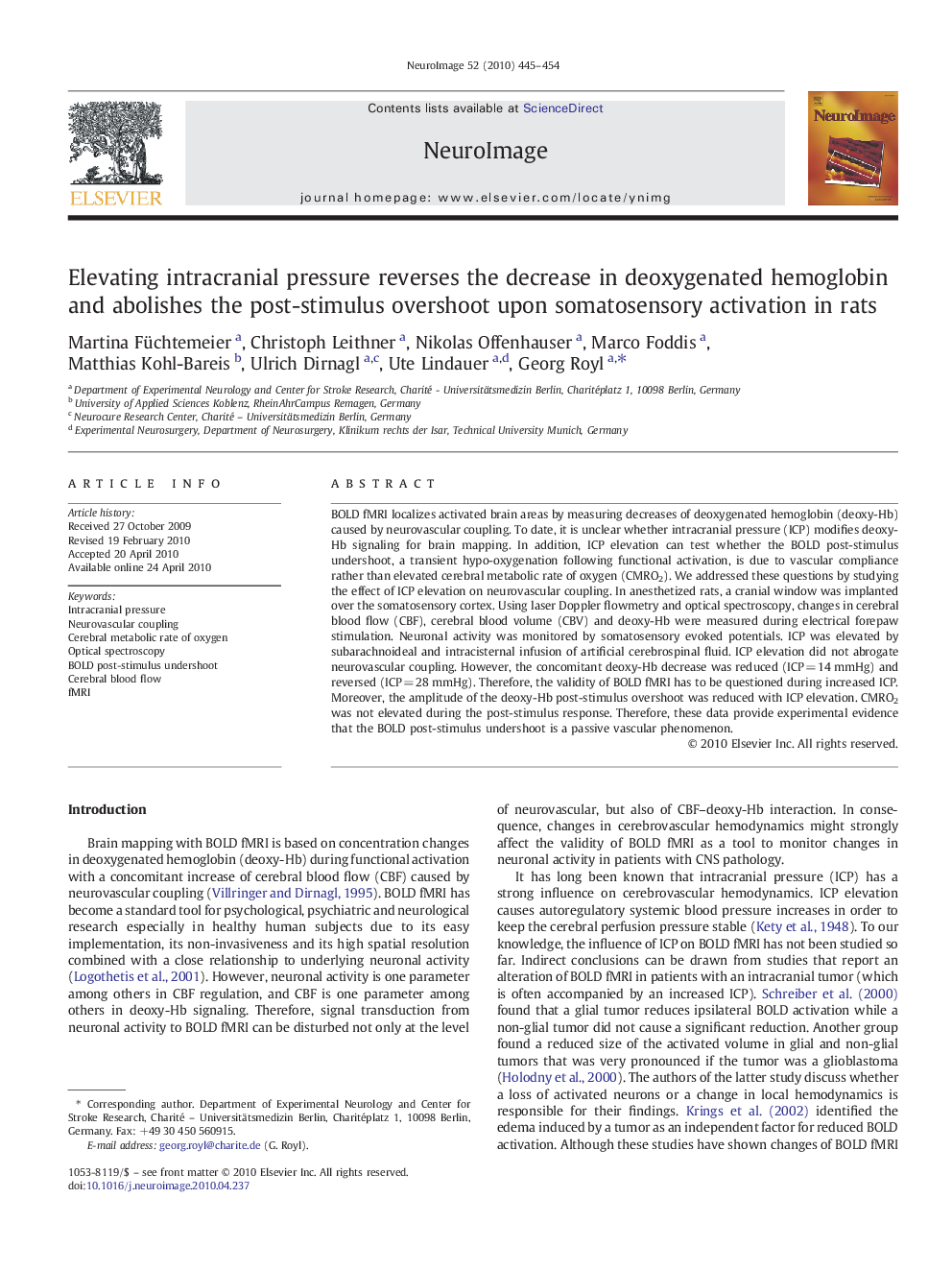| کد مقاله | کد نشریه | سال انتشار | مقاله انگلیسی | نسخه تمام متن |
|---|---|---|---|---|
| 3072170 | 1188763 | 2010 | 10 صفحه PDF | دانلود رایگان |

BOLD fMRI localizes activated brain areas by measuring decreases of deoxygenated hemoglobin (deoxy-Hb) caused by neurovascular coupling. To date, it is unclear whether intracranial pressure (ICP) modifies deoxy-Hb signaling for brain mapping. In addition, ICP elevation can test whether the BOLD post-stimulus undershoot, a transient hypo-oxygenation following functional activation, is due to vascular compliance rather than elevated cerebral metabolic rate of oxygen (CMRO2). We addressed these questions by studying the effect of ICP elevation on neurovascular coupling. In anesthetized rats, a cranial window was implanted over the somatosensory cortex. Using laser Doppler flowmetry and optical spectroscopy, changes in cerebral blood flow (CBF), cerebral blood volume (CBV) and deoxy-Hb were measured during electrical forepaw stimulation. Neuronal activity was monitored by somatosensory evoked potentials. ICP was elevated by subarachnoideal and intracisternal infusion of artificial cerebrospinal fluid. ICP elevation did not abrogate neurovascular coupling. However, the concomitant deoxy-Hb decrease was reduced (ICP = 14 mmHg) and reversed (ICP = 28 mmHg). Therefore, the validity of BOLD fMRI has to be questioned during increased ICP. Moreover, the amplitude of the deoxy-Hb post-stimulus overshoot was reduced with ICP elevation. CMRO2 was not elevated during the post-stimulus response. Therefore, these data provide experimental evidence that the BOLD post-stimulus undershoot is a passive vascular phenomenon.
Journal: NeuroImage - Volume 52, Issue 2, 15 August 2010, Pages 445–454